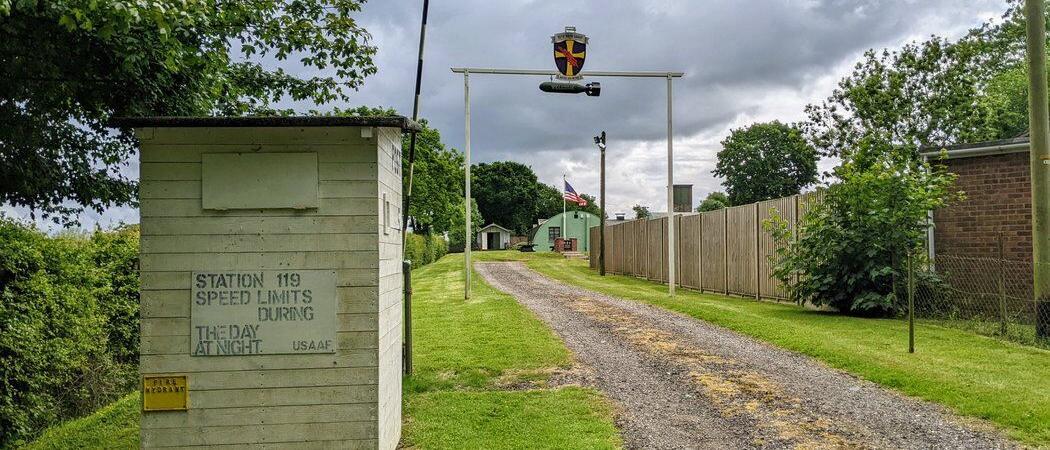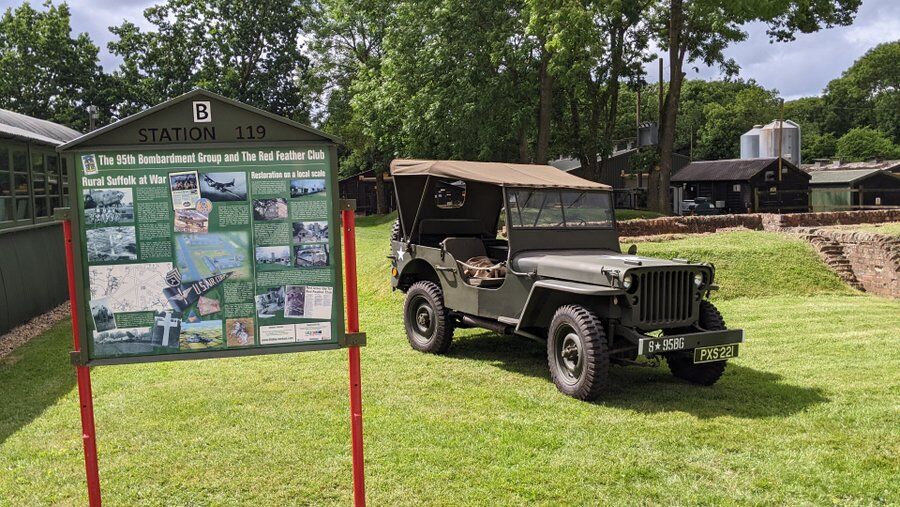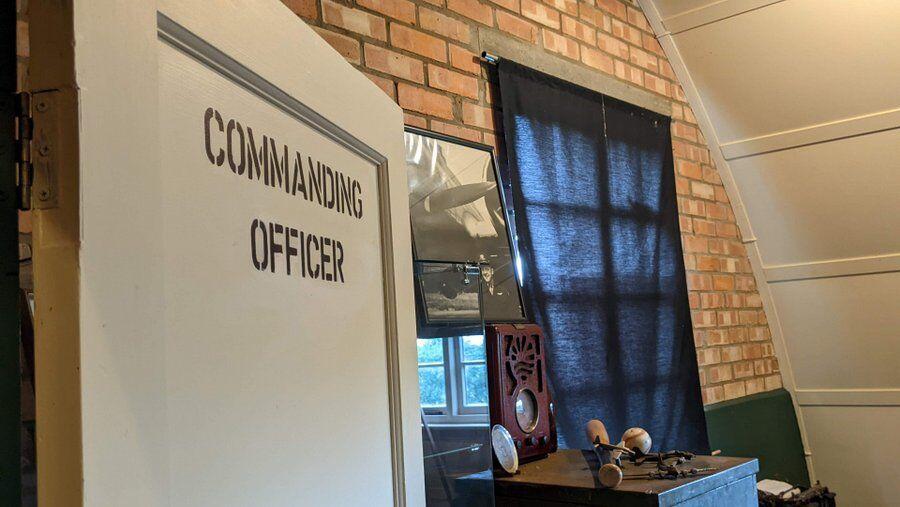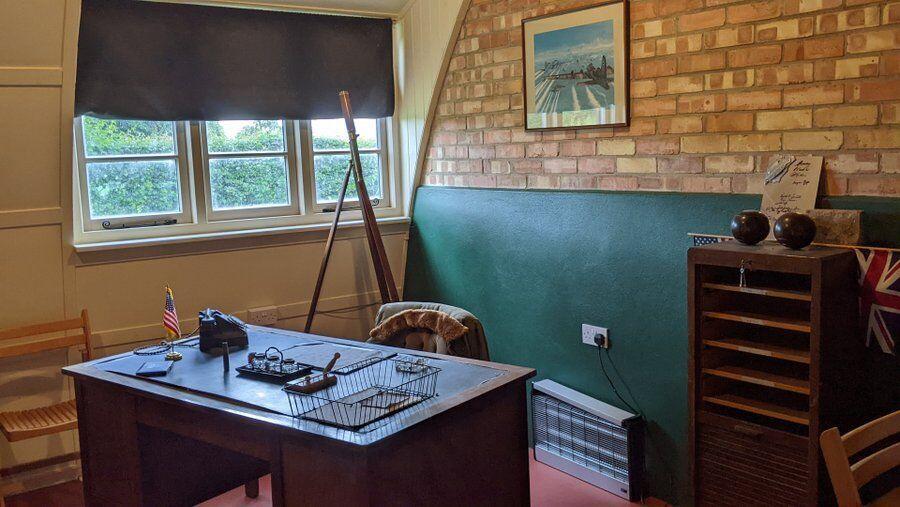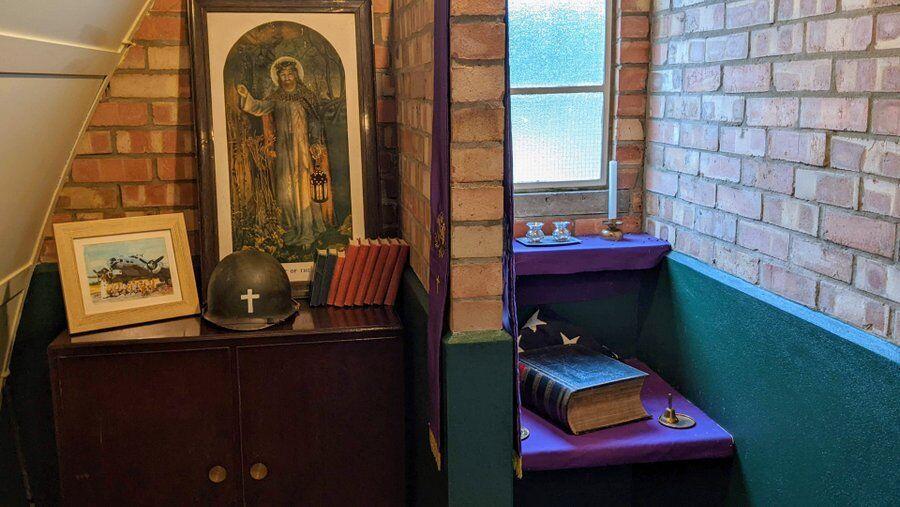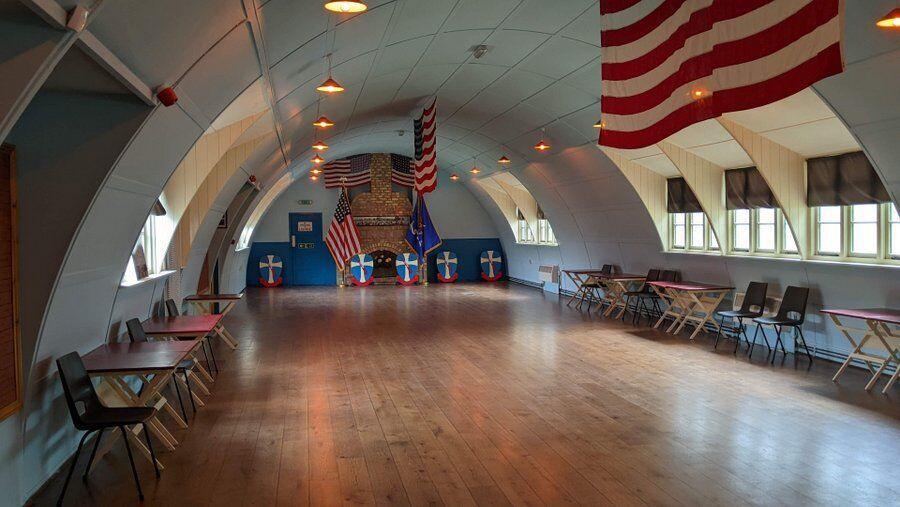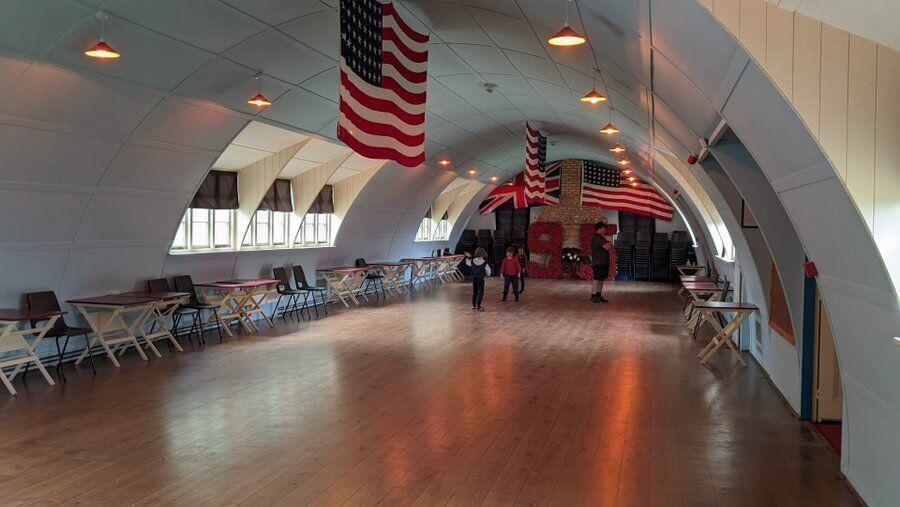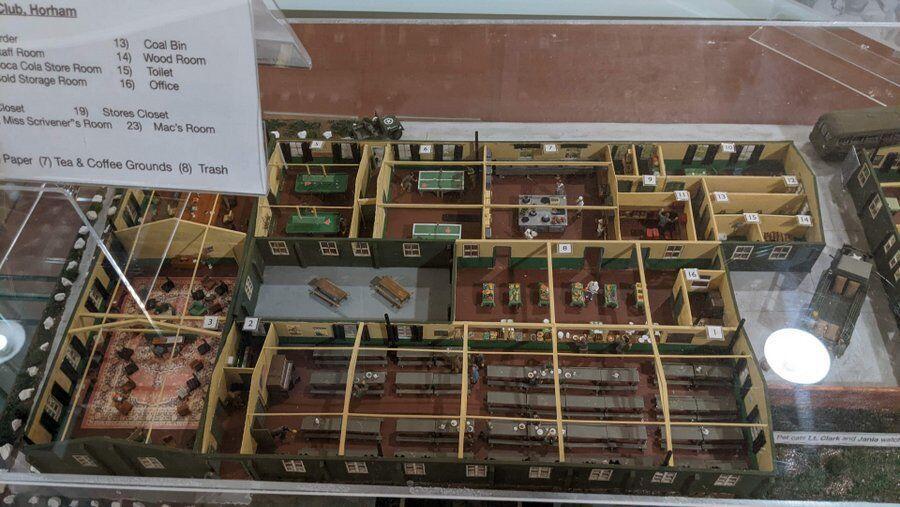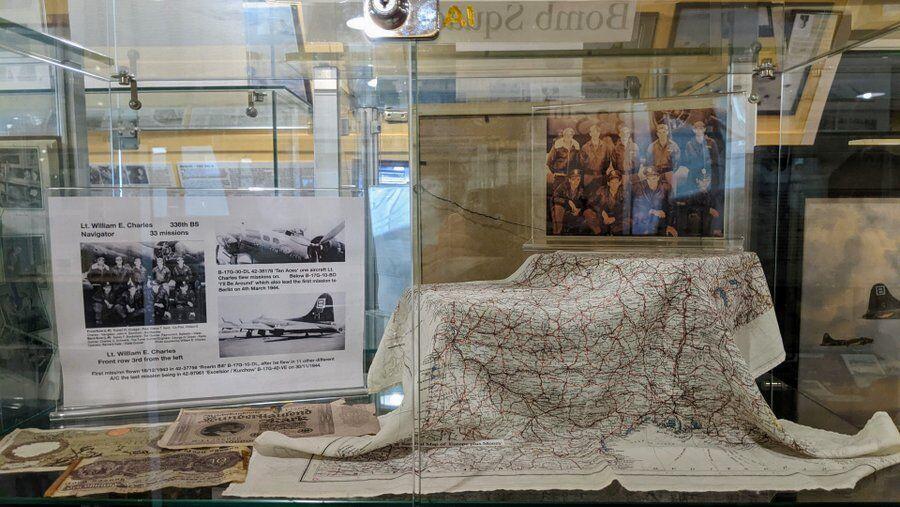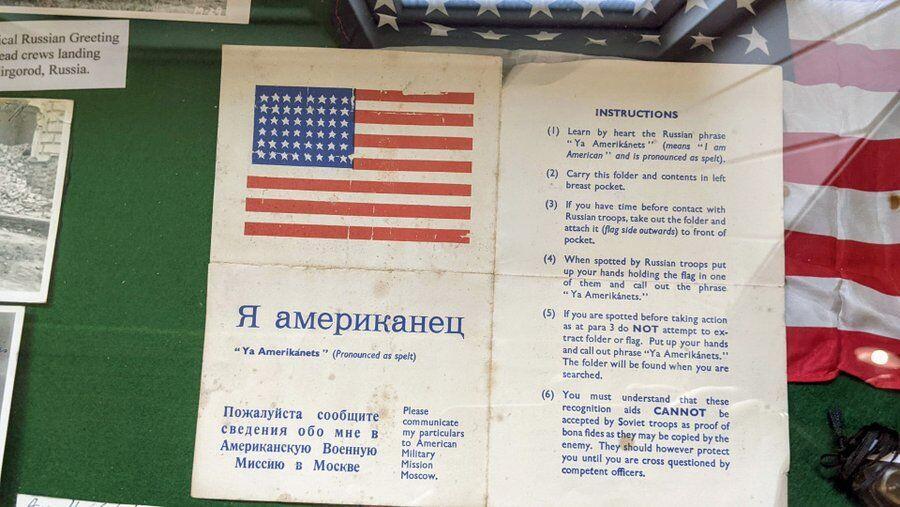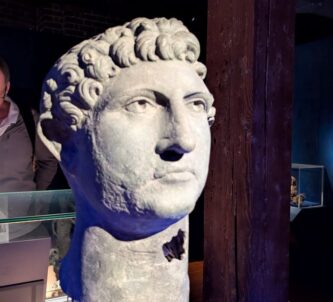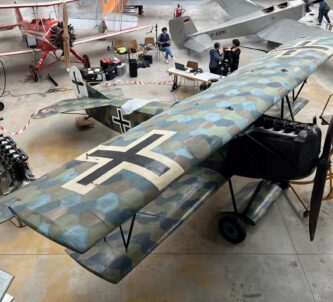A visit to the 95th Bombardment Group museum and Red Feather Club is a rare treat, and when I say rare, I mean rare, so grab any opportunity to visit with both hands!
The USAAF’s 95th Bombardment Group – the only Eighth Air Force Bomb Group to receive the Distinguished Unit Citation three times – was based at Horham in Suffolk during WW2. Little remains of the huge USAAF Station 119, which was home to four squadrons of B-17 bombers (roughly 70 aircraft) and 3½ thousand personnel, but the 95th Bomb Group Heritage Association has restored a tiny set of buildings which it now operates as a memorial museum.
USAAF 8th Air Force Memorial Museums
| 100th Bomb Group Museum – Thorpe Abbotts | 95th Bomb Group Museum & Red Feather Club – Horham |
| 390th Bomb Group Museum – Parham Airfield | 446th Bomb Group Museum – Flixton (at NSAM) |
The core of the interlinked Nissan huts is the former NCO’s club, the Red Feather Club, which is why the museum is often simply referred to as ‘The Red Feather Club’. How did it get it’s name? The 95th BG’s emblem features a red feather, which is also featured in the hair of a native American wielding a tomahawk, riding a bomb, on the emblem of one of the 95th’s squadrons, the 412th.
The 95th Bombardment Group history
The 95th BG comprised four squadrons of B-17s: the 334th, 335th, 336th and 412th*. They were commissioned in June 1942, and deactivated in Aug 1945, very soon after the war in Europe ended.
Horham was not the 95th’s original base. When the group first landed in England in May 1943, they were based at RAF Framlingham (aka Parham airfield). It was from here they undertook their first mission, bombing an airfield at St Omer. Then, a month later, in a re-allocation of airfields, the 95th were moved to their new home at Horham.
From Horham the 95th began its strategic bombing campaign. In August 43 it fought off concentrated enemy fighter attacks to bomb an aircraft factory in Regensburg and received its first Distinguished Unit Citation. Two months later, on a mission to bomb the railway yards at Münster, it once again overcame intense flak and heavy fighter attacks to accurately bomb its target. For this mission it was awarded a second Distinguished Unit Citation.
In March 44, the 95th attacked Berlin. Despite bad weather including snowstorms and heavy cloud cover, they persisted where other bomb groups retired and dropped their bombs while under attack from enemy fighters. This mission was the 8th Air Force’s first attack on the German capital, and for their action they received a third Distinguished Unit Citation. No other 8th Air Force BG achieved three DUCs.
Overall, the 95th flew 321 missions**, losing 157 aircraft and 554 aircrew killed, with 805 men made Prisoners of War. They claimed 425 German fighters downed, more than any other bomb group.
What’s to see at Horham Airfield Museum?
It’s not a large museum. Essentially there are five buildings/rooms linked together as one complex, and then there is a small separate building, the McKight Building.
The McKnight Building
It’s probably easiest to start your visit with the small McKnight building directly opposite the entrance to the main complex. Named after Colonel David T. McKight one of the 95th’s key pilot officers with 44 combat missions to his credit. He was the Commanding Officer of the 335th Bomb Squadron and appointed to be the Group’s Air Operations Officer in September 1943. It didn’t stop there. Before retired from the USAF in 1965, he flew 25 combat sorties in an F-51***, 16 combat sorties as a F-86 Sabre jet pilot, and 41 combat sorties in a Republic F-84 Thunderjet, in the Korean War!
The building has three rooms: a briefing room where there is a short film about the 95th BG and some details on the walls; a recreation of the Chaplain’s room (Capt Father J. Hinkley); and a recreation of a Commanding Officer’s office (David McKnight).
Kitchen

The former Red Feather Club kitchen is now the main entrance to the museum and the café. Its main feature is a large model map of the airbase, which shows just how extensive this enormous base was ****. Around the walls of the room are display cases with bits of aircraft and other airfield exhibits. The kitchen leads into…
Brad’s Bar
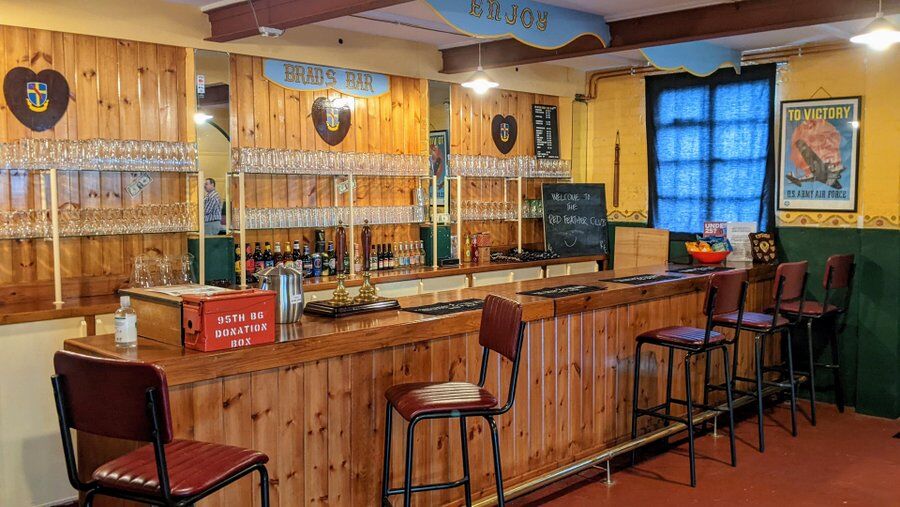
Brad’s Bar, was the bar run by “Brad” and is a working recreation of the bar back in 1943. Brad’s bar leads to the…
Mural Room
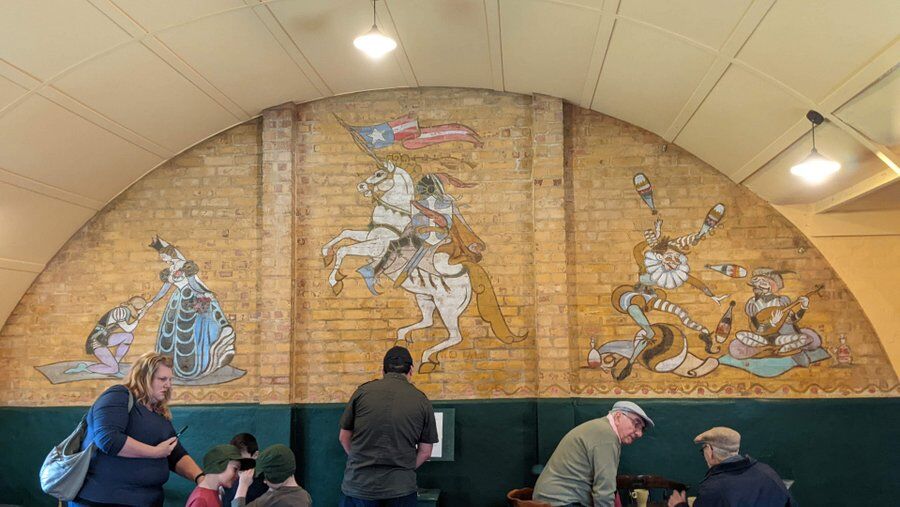
The mural room is a lounge, so named because the original murals on the wall were painted by a serviceman, Nathan Bindler, who also painted nose art on aircraft and logos on the aircrews’ leather flying jackets.
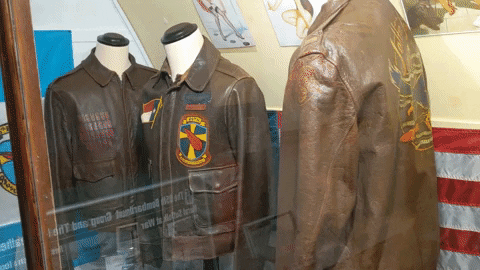
Some flying jackets are displayed in the museum gallery, and, TIP: for other USAAF museums, these jackets rotate so you can see all of them!
The Mural Room opens out into the magnificent…
Blue Lounge
… which is back in use today as a venue for dances and memorial or fundraising events. The other doorway in the Blue Lounge leads to the…
Red Feather Club Museum

This is the room with all the main artifacts of the museum and many photos and stories. They cover some of the BG’s significant missions, escape and evasion (64 downed aircrew evaded capture and escaped home or to neutral countries), models, uniforms and other memorabilia. Many exhibits have been donated by 95th BG veterans and their families, and more continues to arrive at the museum. They could do with more space!
The museum is run, as many of the 8th Air Force memorial museums are, by a small team of local volunteers who give up their time to develop and maintain the buildings and exhibits on very little funding. The museum is only open one day a month during the summer months, so you need to plan your visit. The dates are listed on the museum website.
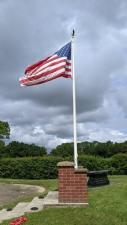 That said, the volunteers gather on most Saturdays to work on the museum, and if visitors drop in, they can usually be accommodated… especially if they roll up their sleeves and help!
That said, the volunteers gather on most Saturdays to work on the museum, and if visitors drop in, they can usually be accommodated… especially if they roll up their sleeves and help!
From time to time relatives and family of 95th veterans from the USA turn up unexpectedly at the museum.
“We have a system in place,” says Ray Howlett, the museum’s curator and a committee member. “The local farmer phones us, and one of our volunteers will drop what they are doing and pop down to the museum to welcome them and show them around. It’s important. It’s our role.”
The Red Feather Club is the official memorial museum of the 95th BG, but there is another museum on the Horham airfield. The former airbase hospital has also been rennovated and turned into a small museum.
Declaration: None needed this time. I was in the area on one of their open days.
* An interesting detail: many bomb groups comprised three squadrons with consecutive numbers… and then a fourth, out of sequence. For example, the 100th BG at nearby Thorpe Abbotts comprised the 349th, 350th, 351st, and 418th squadrons. The reason apparently was that when the bomb groups were originally formed it was with three, consecutively numbered squadrons. It was later thought that to be effective, each BG needed four squadrons. So they were given an additional squadron. It wasn’t a consistant pattern. The exception proves the rule, as they say. The 390th Bomb Group, whose memorial museum is up at their airbase at Parham outside Framlingham comprised the 568th, 569th, 570th, and 571st Bombardment Squadrons.
** Plus seven “Chowhound” missions dropping food supplies to liberated Holland.
*** P-51 Mustangs were redesignated F-51 by the time of the Korean War.
**** There’s a nice local history piece in the Redlingfield section of OneSuffolk.net that proudly describes the base and the activities of 95th BG at Redlingfield.
Redlingfield is one of Horham’s neighbouring villages, 2.8km away (1¾ miles), and its attachment is that “The base reached into Redlingfield with a sentry post in the village and a light, where Redlingfield Doorstep Green now stands, to guide aircraft at night.”
Factbox
Website:
95th Horham Heritage Association
Getting there:
Red Feather Club Museum
Horham Rd
Denham
Eye
Suffolk
IP21 5DG
If you drive out of Horham on the Horham Road in the direction of Eye, you’ll see the Red Feather Club Museum signpost by the side of the road.
Entry Price:
None. As a memorial museum, they don’t charge but there are plenty of opportunities to make a donation. And it would be rude not to buy some merch or a cup of tea and a cake!
Opening Hours:
As explained above. The museum is only open once a month during the summer months, usually on the last Sunday of the month. See their website for the dates.

